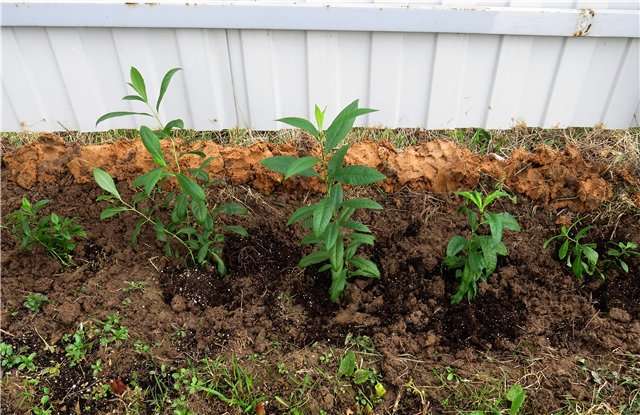When to transplant phlox to another place is better
Content:
Phlox are flowers that many gardeners grow. They are unpretentious, bloom for a long time and take up little space. But sometimes, for various reasons, they need to be transplanted.
How and when can and should you transplant phlox? What is the best time of the year to transplant? How to properly care for the plant after this procedure, and what are the most common mistakes inexperienced growers make? Answers to these and many other questions are presented in this article.
Transplant purpose
Phlox are ornamental plants that amaze with a variety of shades of inflorescences, collected in large fluffy caps, and a delicate aroma. For a long time, amateur flower growers have been using them for landscaping adjoining territories and flower beds. These are mainly perennial flowers, with the exception of the Drummond phlox.
Like any perennial plant, phloxes begin to degenerate over time. The flowers become smaller and dull, the stems are thin, weak and brittle. In addition, this type of garden flowers belongs to plants of intensive growth and development, therefore, over time, soil depletion occurs, and they lack the necessary microelements. And even the introduction of fertilizers sometimes cannot save the situation.
To avoid all these troubles and give the flowers a new life, they need to be replanted from time to time. About once every 5 years.
So, phlox transplantation is a must, but when is it better to do it? When, in winter, summer or spring, can you divide phloxes and plant them in order to get the most beautiful flower garden? Below are the different options.
When can phlox be transplanted
When to transplant phloxes? The best time for this is spring or autumn, when the plants are either not blooming yet, or the period of active flowering is coming to an end. Planting work in each of these seasons has its own characteristics and nuances.
Transplant in spring
Spring transplanting should be done in the first half of May, when the soil has already completely thawed. The signal for the start of planting work can be considered the emergence of sprouts and their reaching a 10-centimeter height. Spring manipulation is recommended for climates with cold and little snowy winters in order to prevent freezing of transplanted flowers.
Transplant in the fall
Transplanting phloxes in the fall is the most optimal option. You can start it already at the end of August. The duration of the period in which phlox can be transplanted in autumn is about 40 days, that is, until about the beginning of October. It is imperative to be in time before the first frosts begin, otherwise the plant will not take root. If the plants still have inflorescences, they must be cut off.
How to plant phlox in the summer
Sometimes, for various reasons, transplanting phlox in the fall is not possible, and many growers wonder if phlox can be transplanted in the summer, for example, in June or July.If necessary, a summer transplant is not critical, but this should be done with extreme caution so as not to damage the sprouts and inflorescences. It is necessary to make sure that there is a large earthen lump on the roots. It is not worth separating the bushes.
Selection and calculation of planting material
Transplanting phlox is a responsible task, and so that the result of labor does not disappoint, when selecting seedlings, you need to follow certain rules:
- choose healthy plants that are not weakened by diseases without signs of phomosis;
- it is advisable to remove last year's old shoots, otherwise, if they rot, problems may arise in new shoots;
- leave a large earthen clod on the roots to avoid drying out;
- check for rot, disease, pests and other damage;
- seedlings intended for division must be strong, healthy with well-developed growth buds;
- for a spring transplant, the number of stems should be more than for an autumn one, about 4-5 pcs.;
- the root system should be slightly shortened, and the stems should be cut to a height of 10 cm;
- the amount of planting material depends on the planting area and the characteristics of the variety. For tall ones, a distance is provided, both between plants and between rows, up to half a meter, for undersized ones - 30-40 cm.
Preparing and carrying out the transplant
Step-by-step instructions on how to do everything right:
- You need to choose a place for planting sunny or with light shading. You should not plant phloxes where they have already grown, the soil in this place is depleted in minerals and, possibly, infected with various fungal diseases.
- Holes are dug before planting 25-30 cm deep and wide so that the root system feels free there and has the opportunity to grow.
- Plants with a very large root system should be divided by carefully cutting with a knife, checking that there are growth buds on each divided part. Do not allow the roots to dry out.
- Fertilizers suitable for phlox and some ash need to be added to the hole.
- Place the roots in the hole so that their upper part is 5 cm below the soil level. The renewal buds should be underground.
- The earth is poured gradually, carefully tamping each layer.
- For seedlings with a damaged root system, a little sand should be poured into the holes, this will help them adapt faster.
- At the final stage of transplanting, water the plants abundantly.
Post-transplant care
Particular attention should be paid to watering the first time after planting. In the fall, the soil must be kept in a moderately moist state, but in no case overflowed. Excess moisture can provoke root rot and the appearance of fungus.

Watering must be done regularly, otherwise there is a risk that the flowers will not take root in a new place
In spring and summer, watering should be done more often to avoid drying out. In the summer, it is also necessary to periodically spray the seedlings. During watering, it will not be superfluous to use drugs that stimulate the growth and development of the root system.
It is also worth taking care of the regular removal of weeds, loosening, and also provide protection in case of sudden changes in temperature.
Major mistakes
Newbie flower growers most often make the following mistakes during phlox transplantation:
- before wintering, they do not make a short pruning of phlox, citing the fact that there are growth buds on the lower part of the shoot, which can overwinter and give new shoots. However, it has been noticed that from such buds mainly weak, "blind" shoots develop, which bloom poorly or do not bloom at all;
- delay the spring removal of covering materials from flowers.Since phlox is a cold-resistant culture, therefore it can easily survive small frosts, but the excessive perspiration that forms under the shelter is destructive for them, which can lead to decay and death of the plant;
- leave too little distance between the bushes. This will lead to a lack of moisture and minerals. As a result, poor growth, poor flowering;
- delay the timing of spring planting. This leads to the fact that the plant does not have time to adapt, so you should not expect abundant, beautiful flowers from it in the summer;
- are content exclusively with mineral fertilizers. They must be used only in combination with organic matter (manure, peat, bird droppings).
So, in order to get constant and beautiful flowering, the plant must be transplanted once every 5 years. Autumn is the best time to divide phlox and plant it. In the spring, it is better not to delay the process and do it in the first half of May. Thorough watering, but without waterlogging, is a guarantee that phloxes will quickly take root in a new place.
Video



















